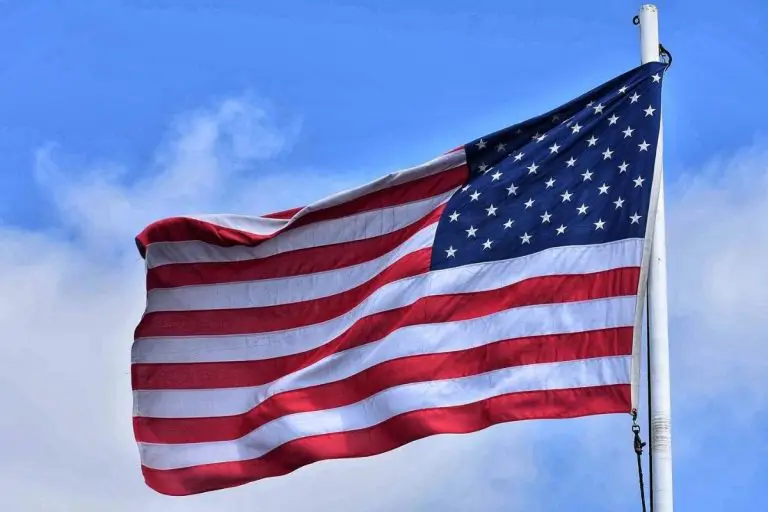What’s The Difference Between a Rule and a Guideline?
We tend to use both words in the same situation, but rules and guidelines have different definitions and usage cases. I’ll try to make this clearer for you in this article.
The main difference between rules and guidelines is that rules are enforced by authorities while guidelines are mostly recommendations, there is no consequence in breaking a guideline.
Keep reading to learn more about this, and get a few examples to make everything even clearer.
Definition of Rule and Guideline
“Rule,” and “guideline,” are two words that are almost synonymous with each other these days. After all, they both direct what people do. However, they really do have definitions that make them completely distinct from each other and how they direct people.
The definitions of “rule,” according to Merriam-Webster’s online dictionary, are:
- “a regulation or bylaw governing procedure or controlling conduct”
- “ a prescribed guide for conduct or action”
While Google defines it as:
- “one of a set of explicit or understood regulations or principles governing conduct within a particular activity or sphere.”
So, a rule, or set of rules, certainly seems to regulate actions forcefully. When bylaws and governing procedures are mentioned, that doesn’t indicate any kind of wiggle room for those who have to follow the rules. In other words, rules are rigid and not open to interpretation.
Meanwhile, a “guideline,” is defined by Merriam-Webster as,
- “an indication or outline of policy or conduct”
And by Google as,
- “a general rule, principle, or piece of advice.”
Both the word “guideline,” and the definitions we have definitely give the impression that a guideline, well, guides, but does not enforce strict adherence because those who read the guidelines are free to apply them to what they do or not.
However, it is heavily implied that, as in a workplace, the guidelines are there to make your life and the lives of your coworkers and employers a lot easier, and your work more effective. In other words, it’s recommended that you use them.
In short, both terms are using a very different vocabulary:
- Rule: regulation, bylaw, principles, rigid, no interpretation.
- Guideline: guide, indication, recommendation.

Guideline vs Rule: Authority differences
Both rules and guidelines are laid out by parents, educational institutions, religious orders, workplaces, sports, and governments in order to achieve organization and give everyone an understanding of what’s expected.
So that no one steps on each other’s toes and everything that needs to be done gets done, according to what is assigned to each individual. What’s different about them is whether there is authority to back them up.
Like the definitions of “rules,” indicated, there is a lot of authority backing up their maintenance. In other words, if rules are broken or upheld, there are consequences and rewards for breaking or upholding them which are carried out by the authorities in the circumstance. It’s important to note that rules only apply with the consent of the party the rules would be applying to, most of the time.
I can definitely see why the authority behind rules would be necessary since it’s a common example in both government, workplaces, and definitely in households, where if someone doesn’t have to do something, they just won’t do it. Or, as in the case of sports, if there were no rules and no referees to uphold them, the games would be a mess and no one would rightly know who won or lost.
Like I said earlier, guidelines are more like recommendations, that do have a purpose, but are not strictly required. They suggest how something should be done, but there are no significant consequences in deviating or upholding them. It will help to have some examples to distinguish guidelines and rules.
Examples of Guidelines and Rules
If I were to show you a set of rules and a set of guidelines, they would look exactly the same. They would both be lists of what to do or how to act, or how to recognize something. Still, it is possible to recognize what are guidelines and what are rules based on what the list is about, and their contents.
Examples of Rules:
Soccer Rules
Soccer rules are necessary to make sure every player understands the basic rules of the game and the roles of their unique positions for smooth gameplay.
- The size of the field of play
- The size and type of the ball
- The number of players on each team
- The uniforms and equipment of the players
- The role of each position on a team

Parliament Procedure
Rules of procedure are necessary in order to create an environment of mutual respect and ability to understand problems and proposals clearly.
- Only one person can have the attention of the assembly at any time.
- Every proposal is entitled to full and free debate.
- The ruling of the majority of the assembly must be carried out, while the rights of the minority are preserved.
- The personalities and desires of individual members of the assembly should be merged into the whole of the organization rather than have individual motives.
Examples of Guidelines:
Branding Guidelines:
Branding guidelines are things you can do but are not required to do to try to make your branding and marketing more effective. These can include,
- The number of colors your logo and website should have.
- The recommended fonts for headlines, body text, menus, etc.
- How many pictures should be on the home page or in each blog post.
- Matching the tone of your site to your business (Ex: Construction = informative and concise)
General Team Guidelines:
Team guidelines for workspaces are useful for making sure everyone is respected and can work together like a well-oiled machine.
- Be open-minded
- Treat your team members with dignity and respect
- Listen to understand and don’t dismiss inputs
- Present problems in a way that is open to discussion and mutual resolution
Uses of Rules vs Guidelines
Both rules and guidelines will be used to modify behaviors and actions but they are used differently depending on the relationship between the one laying the rules or guidelines and the one reviewing them.
Rules are used when there is a relationship between an authority and subordinates, but the rules can’t be enforced without the consent of the subordinate. For example, if you want the benefits of certain jobs such as medicare, more money, 401k, and dental, you would have to comply with the rules your employer established for their business and employees.
Guidelines are used when those creating the list of suggestions have no authority to enforce their suggestions on anyone, or when the suggestions are subjective. Not everyone believes the best practice in web design is to limit their color palette, or a motivational speaker can recommend ways to change your life, but no one is obliged to take their advice.
FAQs:
What’s the Difference Between Rules and Instructions?
The difference between rules and instructions is similar to the differences between rules and guidelines. Instructions tell you how to do something, step by step, while rules regulate you to do certain things or act a certain way.
What’s the Difference Between Rules and Regulations?
While rules and regulations are both enforced standards of behavior, regulations are more official. Regulations are usually standard laws and statutes that are concerned with certain laws under legislature. A “rule” is a more general term for enforced standards of behavior and policies.
What’s the Difference Between Rules and Principles?
The difference between rules and principles is the most interesting between any other synonym of some kind of law. Rules are imposed on consenting persons from outside sources like employers or governing bodies. Meanwhile, principles are internal, morality that forces us to act in certain ways unless we willingly abandon them.
Rules vs Guidelines: A comparison table
| Rules | Guidelines | |
| Definition | A set of expected behaviors enforced on consenting parties in exchange for some benefit. | Suggestions of behavior that are not enforced but highly recommended. |
| Authority | Rules are enforced by authorities. Have consequences and rewards for being broken or upheld. | Are recommended by authorities but not enforced. No lasting or significant consequences in breaking or keeping guidelines. |
| Examples | Rules for sports such as soccer, football, and tennis. | Guidelines on how to create effective branding. |
| Uses | Used between an authority and consenting subordinates. | Used between an advisor and consenting listener. |






